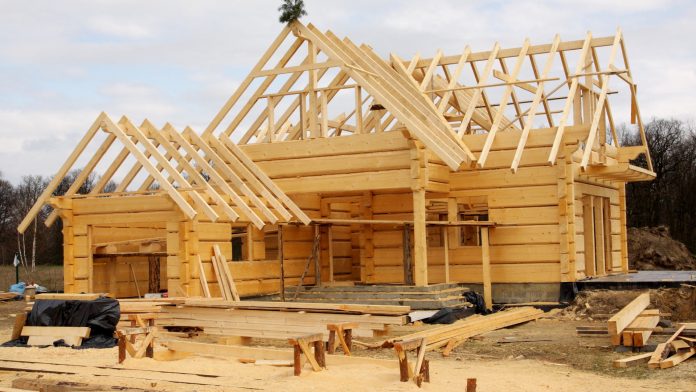Supply is slumping as home prices skyrocket. Strong buyer demand has homebuilders feeling confident, too, despite soaring lumber prices.
Is it starting to feel like 2007 to anyone else?
Builder sentiment held steady at 83 in May according to the National Association of Home Builders (NAHB) survey, released this morning. Any reading above 50 indicates positive sentiment.
And the last time sentiment peaked like this was in 2006, a year before the housing bubble burst. Before that, it happened again in 1999 prior to the market’s unrelated dot com collapse.
These days, though, the name of the game is inflation by way of a roaring US economy and liquidity-happy Fed. The ratings agencies, which were responsible for the last housing bubble, have nothing to do with it.
And no chairman in the Fed’s history has been quite as dovish as Jerome Powell. Commodities have climbed to dizzying heights under his guidance.
Lumber perhaps being the most notable of the group.
As a result, affordability has flown out the window. Buyer demand remains very strong but is at risk of slipping at a moment’s notice should prices climb prohibitively high. An “extreme shortage” of homes for sale – the NAHB’s own words – is causing purchasing power to weaken.
Low mortgage rates have helped mitigate this issue somewhat, but with rates threatening to climb soon, a “perfect storm” of market-wrecking conditions is mounting.
“First-time and first-generation home buyers are particularly at risk for losing a purchase due to cost hikes associated with increasingly scarce material availability,” explained NAHB chairman Chuck Fowler.
Robert Dietz, NAHB’s chief economist, added:
“Some builders are slowing sales to manage their own supply-chains, which means growing affordability challenges for a market in critical need of more inventory. Homebuyers should expect rising prices throughout 2021 as the cost of materials, land and labor continue to rise.”
It’s not a good sign when suppliers are attempting to control prices. Or, in this case, prevent them from exploding violently higher due to near-zero inventory. By slowing sales, builders are making inventory scarcer, which will in turn cause prices to rise further.
Their goal is to avoid a sudden price run-up, followed by a crash.
But price control has never worked out. President Nixon tried it in the early 70s as US prices and wages ripped higher. In the end, though, his gambit ultimately contributed to a period of “stagflation,” where demand stagnated while inflation spiraled out of control.
This recent housing market activity has Goldman Sachs strategists so concerned that they’re warning of another housing bubble “bigger than 2007’s.”
Talk about reopening old wounds.
“A national housing shortage will fuel substantial home price appreciation for at least a couple more years,” wrote Goldman analysts in a note to clients.
The bank continued, concluding that shelter inflation (or home inflation) would exceed 4% by 2023 – a level untouched in the current economic cycle. If Goldman’s right, it means home prices will accelerate faster than they did in 2006-2007.
Goldman strategists did not clarify, however, whether the current bubble would eventually burst.
And though bubbles typically tend to do that, this one probably won’t. The solution to slowing down the housing market involves raising rates, which the Fed is expected to do to fight inflation.
Over the last few weeks, Powell and Treasury Secretary Janet Yellen have insisted that the current inflation level is merely “transitory.”
But Goldman expects that narrative to change dramatically as shelter inflation rises. Future economic reports are likely to have a similar effect over the next few months.
So, yes, a bubble is forming. But will it burst? Not if rates go up. Instead, it will slowly deflate, allowing inventory to grow while offsetting some of the effects of shelter inflation as broader price indexes continue to climb.








